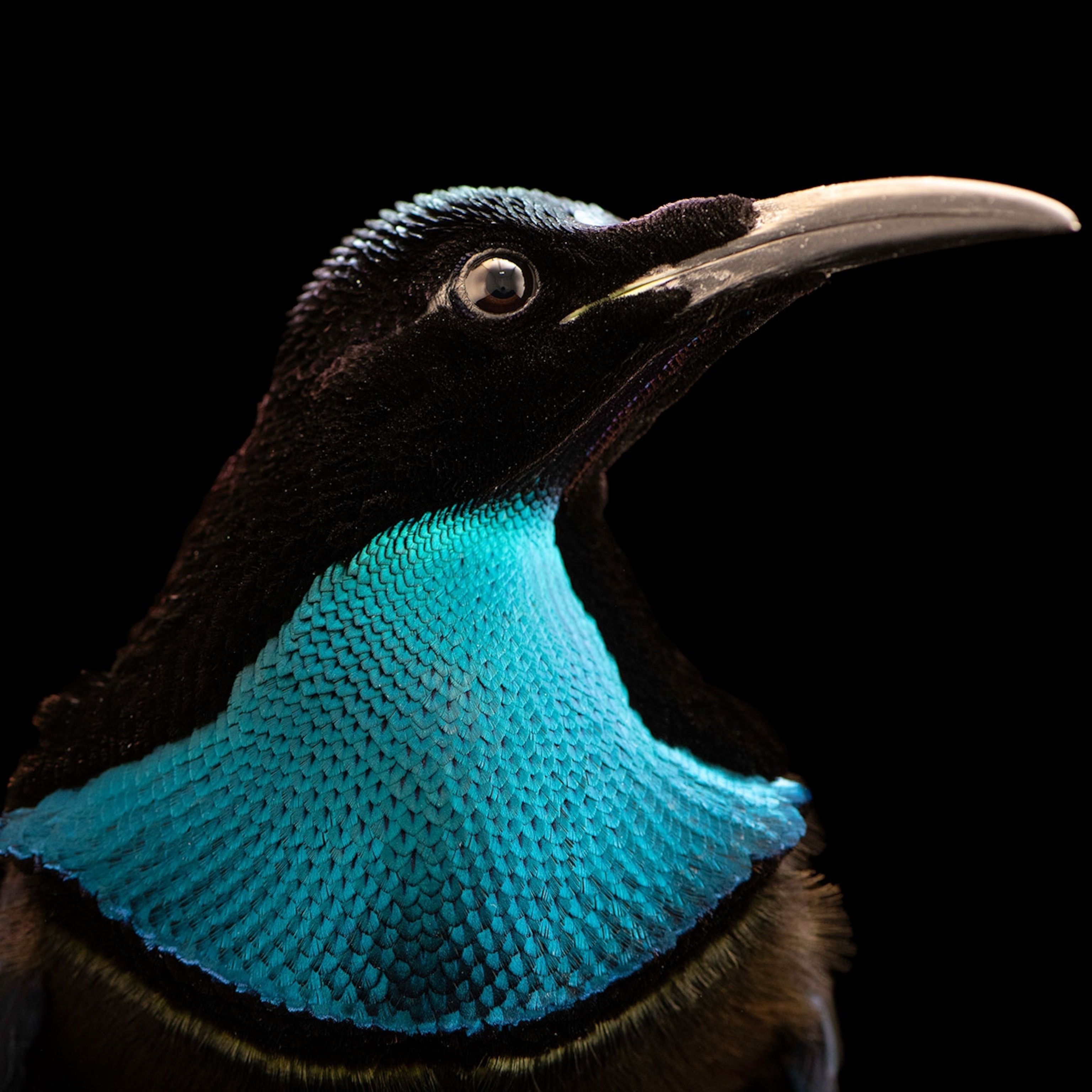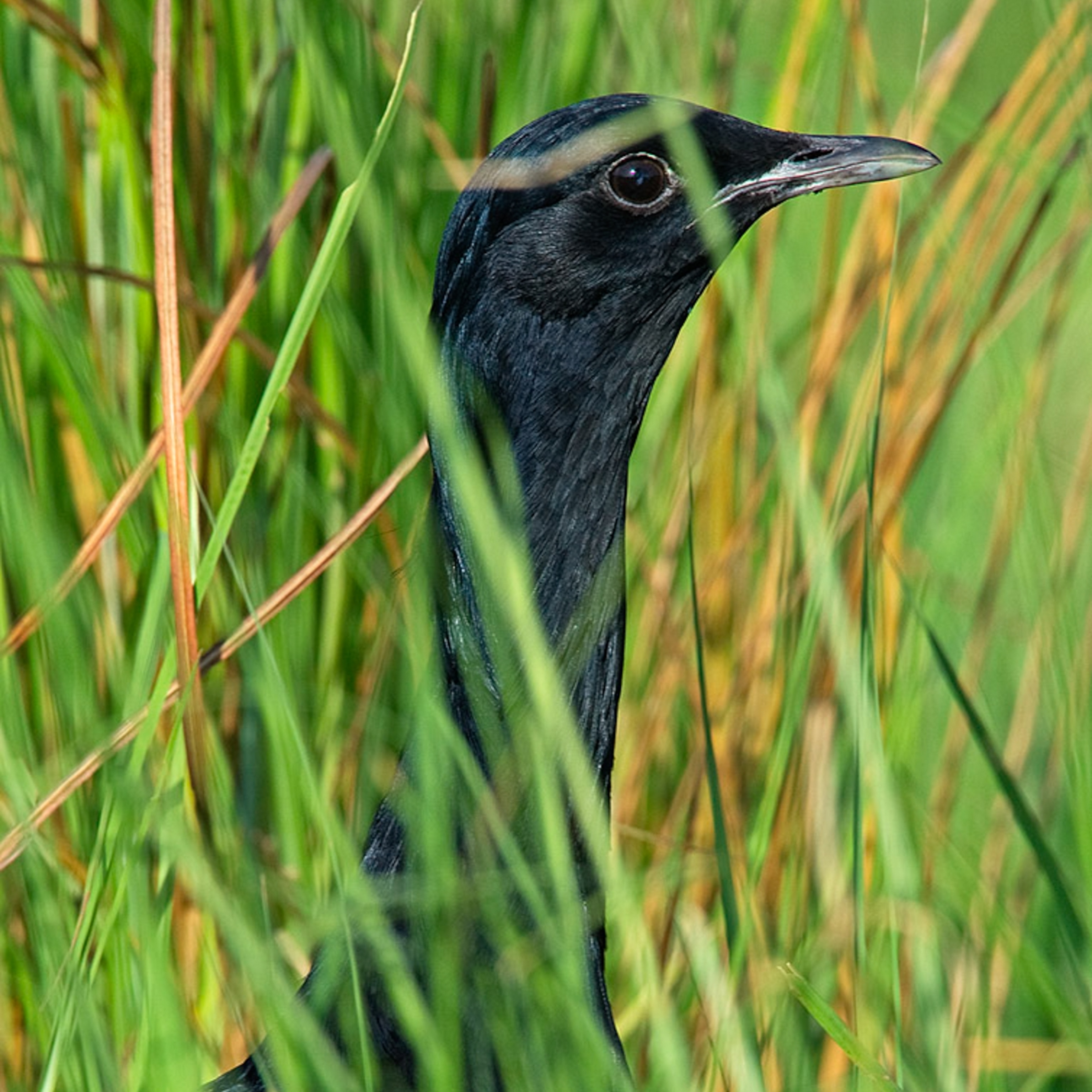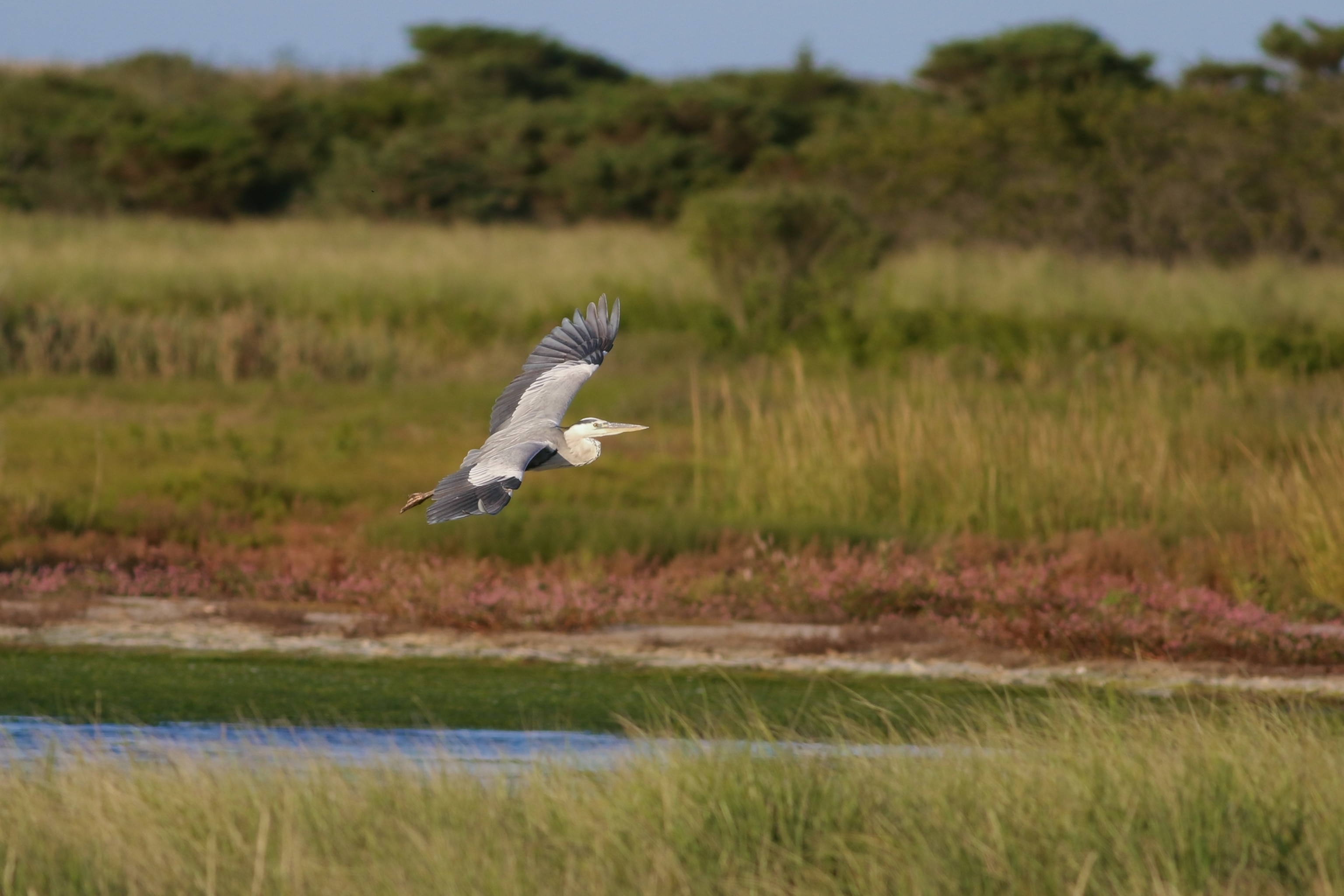
Gray heron seen for first time in contiguous U.S., as species expands range
This tall waterbird, native to Eurasia, was spotted in Nantucket. Could the species soon establish a foothold in the Americas?
Skyler Kardell gets to watch birds for a living, in his job as a coastal steward on Tuckernuck Island, part of the town of Nantucket, Massachusetts. While patrolling the beach on September 5, observing terns, the 18-year-old spotted what initially looked like a great blue heron, a waterbird commonly seen there. But on closer look, something was off—it appeared smaller and paler.
“It had a shorter neck, shorter legs, and shorter bill than a great blue,” Kardell says. In fact, it looked like a gray heron, though Kardell had only seen one before in a book. But these birds are native to Eurasia and Africa.
“I had my suspicions right from the get-go, but because this identification poses a number of issues, I knew I had to be careful with my excitement,” he says.
Kardell reviewed his initial photographs and returned the next day to Tuckernuck to find the bird, but it was no longer there. That afternoon he took a boat to neighboring Muskeget Island to continue searching with two friends. It was as if the bird was waiting for them. He took more photos and shared them with the Massachusetts Avian Records Committee, which confirmed his initial hunch: definitely a gray heron.
This is the first time the species has ever been recorded in the contiguous United States, scientists say. It shows that gray herons are increasing their range and suggests that the species could one day establish a population in the Americas. The find is surprising not only because of the distance this heron must have traveled, but also due to how difficult it is to discern a gray heron from the great blue heron.
And as unexpected as it is, it’s yet one more example of how frequently birds can find themselves in areas outside their range, so-called “vagrant” birds. This is a tendency that scientists are increasingly accepting as a natural part of their biology, rather than a fluke, says Richard Veit, a director at the Tuckernuck Land Trust, a conservation organization in Nantucket, and an ornithologist at the College of Staten Island in New York City.
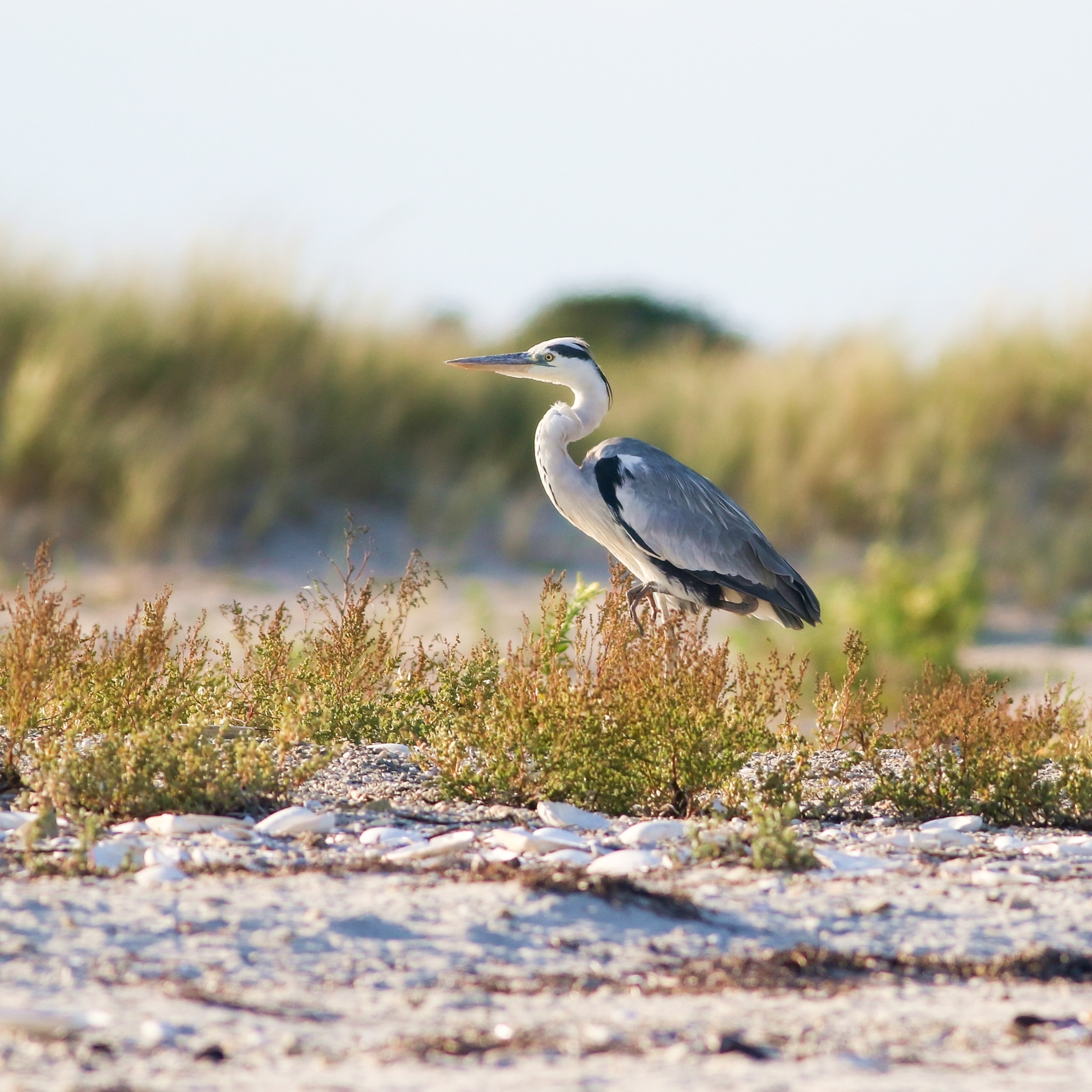
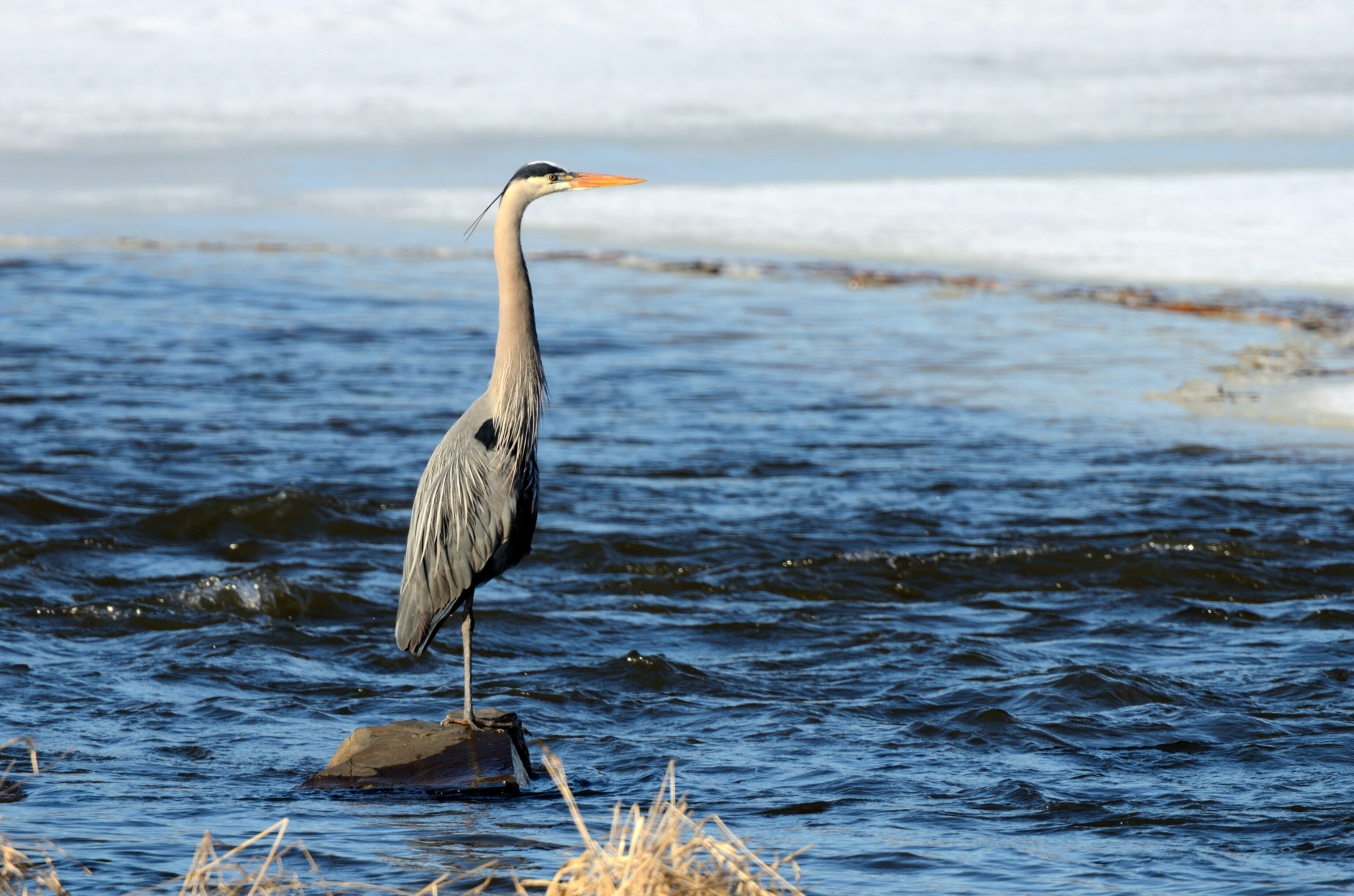
Birds of a feather
Both gray herons (Ardea cinereal) and great blue herons (Ardea herodias) are long-legged waterbirds in the same taxonomic genus, and found along coasts, streams, and wetlands. They feed on small fish, crustaceans, insects, and even rodents, and they likely diverged from a common ancestor somewhere around two million years ago, Veit says.
While superficially similar, a trained eye can distinguish telltale differences: Gray herons are slightly smaller and have shorter legs, bills, and necks. They’re also typically lighter in hue, says Wayne Petersen, an ornithologist at Massachusetts Audubon who coauthored the book Birds of Massachusetts with Veit.
But they’re usually separated by an ocean. Great blue herons are found throughout most of North America and into Central America and the Caribbean, while gray herons are native to Europe, sub-Saharan Africa, and parts of central and southern Asia.
Ornithologists don’t know exactly how this bird arrived in Nantucket, though a feather-by-feather photographic analysis done by ornithologist Tom Johnson suggests it’s the same individual spotted in Nova Scotia earlier this summer.
Petersen says the bird most likely arrived by taking a northerly flight from Europe, perhaps hugging the shores of Iceland or Greenland and Canada on its way. Or, it could have flown from western Africa to South America or the Caribbean and come north. Also possible, though less likely, the bird could have “hitched a ride” on a boat from Europe. Least likely, it may have crossed Alaska from Siberia and flown east from there. (Gray herons have been spotted rarely in the Aleutian Islands.)
Undoubtedly, the range of gray herons is expanding in Europe, and they’re appearing almost every year in the Caribbean and in Newfoundland, according to Veit.
Gray herons are also now regular winter visitors in Iceland, and there have been 15 recorded sightings in Greenland. To the south, more than 150 individuals can be seen annually in the Azores, a group of islands in the eastern Atlantic, and the species is not uncommonly seen in Bermuda. On Barbados sightings occur almost year-round now, though there’s no record of the birds breeding there yet.
As the animals continue to visit locations in the Americas, “eventual colonization seems almost inevitable,” Veit says.
‘Vagrant birds’
Though there’s a tendency to see so-called “vagrant” birds as “out of place,” Veit argues that such odysseys should be seen as a part of nature—a natural way for species to find new territories and potentially expand.
“This pattern of ‘vagrancy’ and colonization is quite typical of birds and other organisms, but birders have paradoxically been unwilling to accept this notion because of some very outdated notions that vagrants like the Tuckernuck gray heron are lost, defective in their orientation, or ‘blown by a storm’—none of which are true,” Veit says.
If gray and great blue herons came to share the same range, they would likely be competitors because of their similar habitat, behavior, and diet. And as close relatives, it’s possible they could interbreed and produce viable offspring, Petersen says.
“Fifty years ago, one could argue that there was not enough data available on vagrant birds to be able to see that vagrancy is a process that leads to colonization and speciation,” Veit says. “But these days we are literally awash in data” that show just that.
For example, a related species, cattle egrets—similar-size waterbirds with white plumage—migrated from Africa to South America in the 1950s and moved north from there. They can now be widely found from Central America to the middle and southern U.S. If cattle egrets can do it, perhaps gray herons could as well, Petersen says.
The gray heron has not been seen since September 6 and is believed to be traveling west. It could be many miles away by now—perhaps providing a surprise for an observant birder somewhere else.


